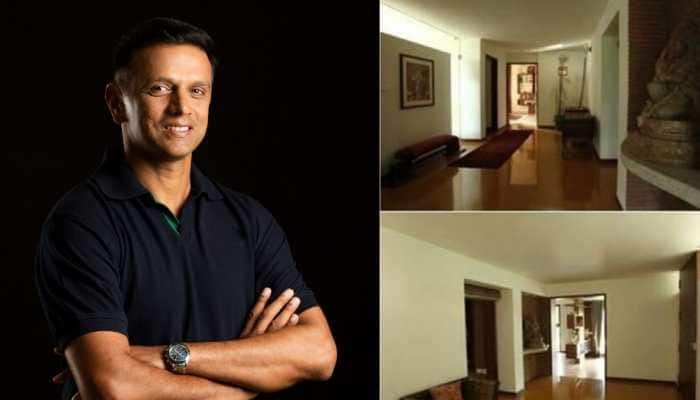Cassini gets ready for closest-ever observations of Saturn
Beginning on November 30, Cassini's orbit will send the spacecraft just past the outer edge of the main rings.
Trending Photos
) Image credits: NASA/JPL-Caltech/Space Science Institute
Image credits: NASA/JPL-Caltech/Space Science Institute Washington: NASA's Cassini spacecraft has entered the final year of its epic voyage during which it will make the the closest-ever observations of Saturn and its rings.
Beginning on November 30, Cassini's orbit will send the spacecraft just past the outer edge of the main rings.
These orbits, a series of 20, are called the F-ring orbits. During these weekly orbits, Cassini will approach to within 7,800 kms of the centre of the narrow F ring, with its peculiar kinked and braided structure.
"During the F-ring orbits we expect to see the rings, along with the small moons and other structures embedded in them, as never before," said Linda Spilker, Cassini Project Scientist at NASA's Jet Propulsion Laboratory, Pasadena, California.
"The last time we got this close to the rings was during arrival at Saturn in 2004, and we saw only their backlit side. Now we have dozens of opportunities to examine their structure at extremely high resolution on both sides," Spilker noted.
Cassini's final phase -- called the Grand Finale -- begins in earnest in April 2017, the US space agency said.
A close flyby of Saturn's giant moon Titan will reshape the spacecraft's orbit so that it passes through the gap between Saturn and the rings - an unexplored space only about 2,400 kms wide.
The spacecraft is expected to make 22 plunges through this gap, beginning with its first dive on April 27.
During the Grand Finale, Cassini will make the closest-ever observations of Saturn, mapping the planet's magnetic and gravity fields with exquisite precision and returning ultra-close views of the atmosphere.
Scientists also hope to gain new insights into Saturn's interior structure, the precise length of a Saturn day, and the total mass of the rings -- which may finally help settle the question of their age.
The spacecraft will also directly analyse dust-sized particles in the main rings and sample the outer reaches of Saturn's atmosphere -- both first-time measurements for the mission.
"It's like getting a whole new mission," Spilker said.
"The scientific value of the F ring and Grand Finale orbits is so compelling that you could imagine a whole mission to Saturn designed around what we're about to do," Spilker noted.
A joint endeavor of NASA, the European Space Agency (ESA) and the Italian space agency, Agenzia Spaziale Italiana (ASI), Cassini is a sophisticated robotic spacecraft orbiting the ringed planet and studying the Saturnian system in detail.
The mission has already spent more than 12 years studying Saturn, its rings and moons.
Stay informed on all the latest news, real-time breaking news updates, and follow all the important headlines in india news and world News on Zee News.
Advertisement
Live Tv
Advertisement







)
)
)
)
)
)
)
)
)
)
